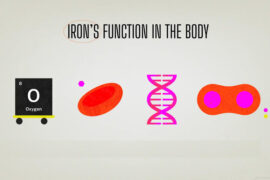The analysis highlights a concerning association between short-term exposure to air pollution and an increased risk of stroke. In this context, short-term exposure refers to exposure that occurs within five days after a stroke. This suggests that individuals who have experienced a stroke may face a heightened risk if they are exposed to air pollution shortly after the stroke event.
The study was published in the medical journal of the American Academy of Neurology. “Previous research has established a connection between long-term exposure to air pollution and an increased risk of stroke,” stated study author Ahmad Toubasi, MD, of the University of Jordan in Amman.
“However, the correlation between short-term exposure to air pollution and stroke had been less clear. For our study, instead of looking at weeks or months of exposure, we looked at just five days and found a link between short-term exposure to air pollution and an increased risk of stroke.”
Here’s a summary of the key findings:
- Short-Term Exposure and Stroke Risk: Short-term exposure to air pollution within five days before a stroke was found to be linked to an elevated risk of stroke.
2. Types of Air Pollutants and Stroke Risk:
- Nitrogen Dioxide: Higher concentrations of nitrogen dioxide were associated with a substantial 28% increased risk of stroke.
- Ozone: Elevated ozone levels were linked to a 5% increase in the risk of stroke.
- Carbon Monoxide: Exposure to carbon monoxide was associated with a significant 26% increase in stroke risk.
- Sulfur Dioxide: Higher levels of sulfur dioxide in the air resulted in a 15% increased risk of stroke.
3. Particulate Matter (PM) and Stroke Risk:
- PM1: Increased concentrations of PM1, which includes very fine particles less than 1 micron in diameter, were associated with a 9% elevated risk of stroke.
- PM2.5: PM2.5, consisting of inhalable particles from various sources, was linked to a 15% increased risk of stroke.
- PM10: PM10, which includes larger particles such as dust from roads and construction sites, showed a 14% higher risk of stroke.
4. Air Pollution and Stroke Mortality:
- Higher levels of air pollution were also associated with a higher risk of death from stroke.
- Nitrogen Dioxide: A 33% increased risk of death from stroke was linked to elevated levels of nitrogen dioxide.
- Sulfur Dioxide: Sulfur dioxide showed a significant 60% increase in stroke-related mortality.
- PM2.5: PM2.5 was associated with a 9% increased risk of death from stroke.
- PM10: PM10 showed a 2% increased risk of death from stroke.
“There is a strong and significant association between air pollution and the occurrence of stroke as well as death from stroke within five days of exposure,” Toubasi stated. “This highlights the importance of global efforts to create policies that reduce air pollution. Doing so may reduce the number of strokes and their consequences.”
These findings highlight the critical need for measures to reduce air pollution and minimize short-term exposure, as it poses a substantial risk to public health, particularly in terms of strokes and stroke-related mortality. Strategies to improve air quality and reduce emissions from various sources, including transportation and industrial activities, can play a vital role in mitigating these health risks. Public awareness and policy actions are essential to protect individuals from the adverse effects of air pollution.
Disclaimer:
The information contained in this article is for educational and informational purposes only and is not intended as a health advice. We would ask you to consult a qualified professional or medical expert to gain additional knowledge before you choose to consume any product or perform any exercise.








